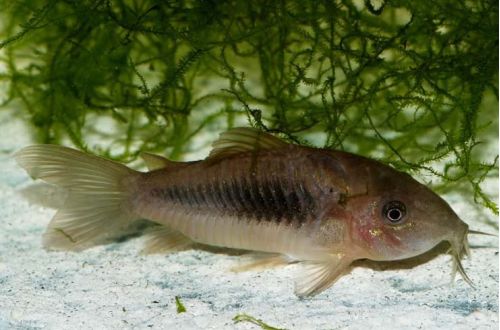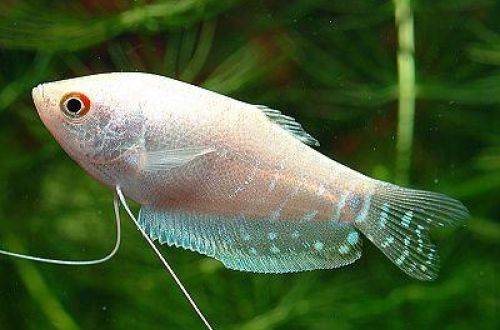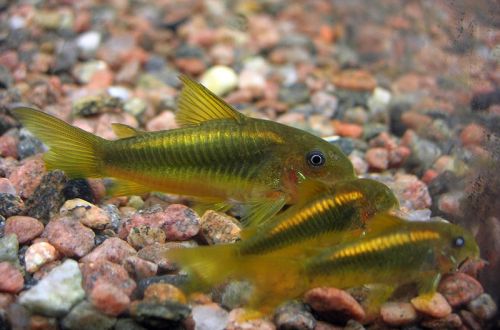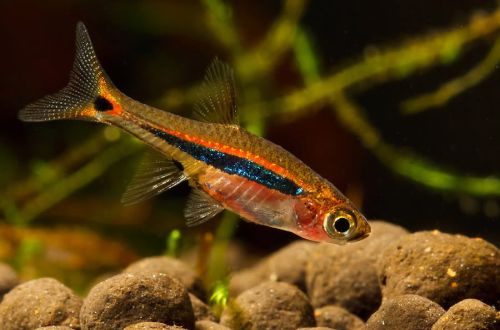
Golden catfish
The golden catfish, scientific name Corydoras aeneus, belongs to the family Callichthyidae (armored or callichthy catfish). It belongs to one of the most famous and accessible fish species in the aquarium hobby. The modest coloration is compensated by peacefulness and unpretentiousness in keeping, the catfish is able to successfully adapt to various water conditions.

Currently, various species of the genus Corydoras are supplied under a single name, since there is still no generally accepted point of view who should be considered the true Corydoras aeneus. Some representatives that have a body pattern characteristic only of them are separated into separate species, for example, Emerald catfish, Julie’s Corydoras, Speckled catfish, etc. In turn, the name “Golden catfish” is rather collective, uniting several very similar species originating from different regions South American continent.
Habitat
It lives in most of the river systems of South America. For a long time, it has been bred in captivity around the world, so it is almost impossible to find specimens caught in the wild for sale.
Description
A tall, shortened body covered with a shell of bony plates arranged in two rows. Adult females are much larger and wider than males, especially during the spawning season. The coloration is mostly solid, golden or with a bronze tint, and other similar color variations are widespread, including albino catfish.
Food
Any food: dry, live or frozen. The main condition is that it must be sinking, the Golden catfish feeds at the bottom and does not float to the surface to the feeder. The optimal diet consists of a combination of several types of feed. Feed 2-3 times a day in the amount eaten in 5 minutes. The remains are removed from the aquarium.
Maintenance and care
General aquarium with a soft substrate of coarse sand, small pebbles are allowed. There are no requirements for another design, however, a certain amount of shelters in the form of snags, thickets of plants are welcome.
Water parameters do not really matter if they are in an acceptable range. The minimum set of equipment includes a filter, heater, aerator and lighting system, additional devices are purchased as needed and the requirements of other aquarium neighbors.
Maintenance includes weekly cleaning of the substrate from organic waste (uneaten food residues, excrement) and replacement of part of the water by 15–20%. The intervals can be extended if the aquarium is sparsely populated and/or if a high performance filtration system is installed.
Behavior
Peaceful calm look, it is recommended to keep in a group of 4 individuals. It gets along well with other non-aggressive species.
Breeding / breeding
A clear sign of imminent spawning is the significantly enlarged belly of the female. From this moment of detection, daily water changes up to 50% of the volume should be made and the temperature should be gradually lowered by 2–3 degrees below normal. Be sure to increase aeration by adding more atomizers.
These activities should be carried out until the female lays eggs, usually she attaches them to glass or dense leaves of plants. The eggs are carefully removed into a separate tank, you can use a simple glass jar filled with water from the aquarium.
The fry appear after 3-4 days, at first they feed on the remains of their yolk sac, and then they are already able to take microfood (Artemia nauplii, ciliates).
Fish diseases
A hardy and unpretentious species, cases of the disease occur only when kept in a neglected dirty aquarium and / or in contact with already sick fish. In favorable conditions, health problems usually do not arise. Read more about symptoms and treatments in the Aquarium Fish Diseases section.





